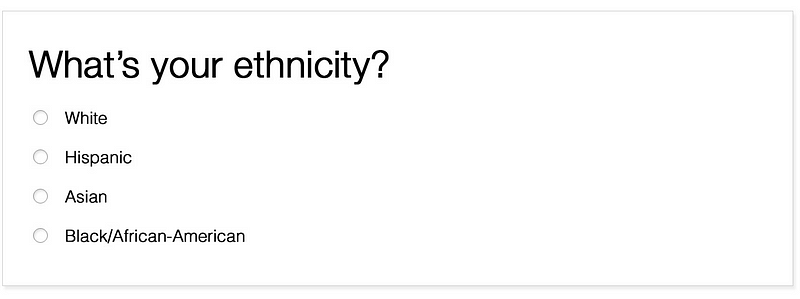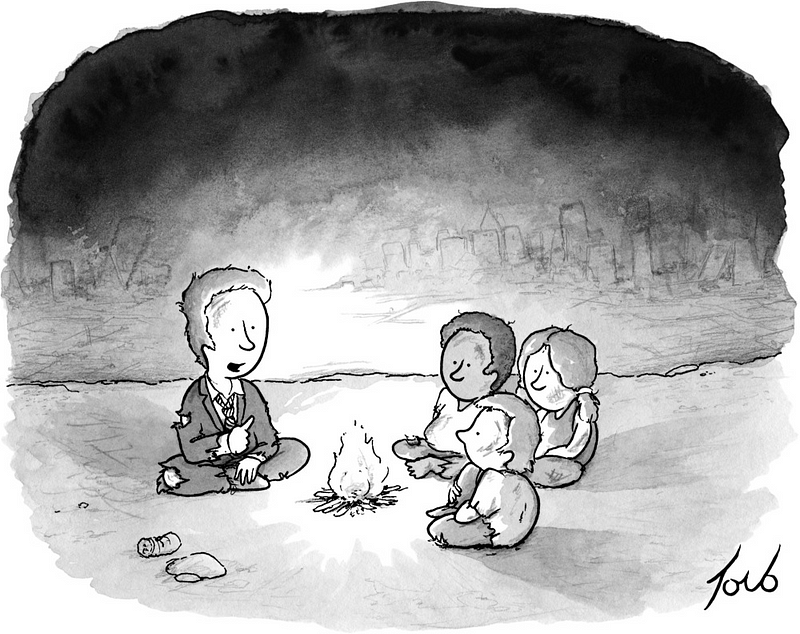Ethics in design: an interview with Harry Brignull, from darkpatterns.org
Are we finally at a point where designers will own and take more responsibility for the impact they have on people’s lives? We decided to…
Are we finally at a point where designers will own and take more responsibility for the impact they have on people’s lives? We decided to ask the brain behind darkpatterns.org for his thoughts on the topic.

State of UX 201 7, Illustration by Pablo Stanley
Following up our report on the State of UX in 2017, we are interviewing designers who are big thinkers for each one of these important themes for the design community in 2017. Let’s keep the conversation going!
Every year we see new phones, computers and devices connecting our lives. Every year we see new way to let people interact and connect with business and other people. Yet, we still see a lot of same, old issues of ethics and responsibility waiting to be solved. Harry Brignull has been fighting user deception on his website darkpatterns.org and kindly joined our conversation on ethics in design and our role as designers of community.


Not your fault, but your responsibility
Diversity and ethics were two of the most important topics in UX this year. Many Designers started in UX to be able to have meaningful impact on people’s lives. Are we finally at a point where we can do that?
The products and apps we design are used by millions — sometimes billions — of people, creating new markets, improving the economy, and shaping up how people interact with each other. While delightful animations and novelty technologies can put a smile on someone’s face, we have the tools and responsibility to impact much more than that with our work.
Companies are starting to realize they are not only responsible for their impact on society, but also that transformations in society can impact their product design. Airbnb hired a Director of Diversity not only to lead specific initiatives, but also to help shape their products and features with diversity in mind. Nextdoor learned that they could play a role in fighting racism by making some small improvements on the flow to post a message in their platform.
Design can’t be just incidental. Our work has impact on people’s lives.
We, as designers, also have responsibilities of our own. Every design decision carries some opinion or perspective about the world. Unfortunately, some of those decisions are solely based on the designer’s assumptions. From a simple ethnicity question in a form to the way we will design a complete world in Virtual Reality, we could be missing the opportunity of breaking stereotypes and misconceptions.

The (frustrating) User Experience of defining your own ethnicity (source)
It’s not easy.
First, we need to understand our bias to question the design solutions we are creating and be as impartial as possible. Even when we do that, the end product can still be failing in some way. When that happens, the underlying question becomes how intentional the error was, and what has been done to fix it.
A design can fail, designers shouldn’t.
Second, we need to consider the impact of our work and how it can give something positive back to society. We’re not in the game just to make stakeholders happy, and nothing is going to change if we don’t proactively act on it.
“If your company is just in it for the money, maybe you should look for a better company. It’s not your fault, but it is your responsibility” — Alan Cooper, Ranch Stories talk


Harry Brignull is an independent User Experience Design consultant, blogger at the brilliant 90percentofeverything.com and curator at darkpatterns.org — a site dedicated to understanding deceptive user interfaces, with the aim of stamping them out and improving the web for everyone.
A lot of designers say they chose this career to be able to have an impact in people’s lives — yet most of the discussions in design forums and online channels revolve around design tools and prototyping. Why are we not discussing broader topics such as ethics, diversity and social impact in design?
Harry: I think designers are discussing these topics a fair amount at the moment. But discussion isn’t the solution.
The problem is that most designers just don’t get to have a say in strategic decisions for their employer’s business practices.
I’m probably going to be unpopular for saying this, but the problem is that most designers just don’t get to have a say in strategic decisions for their employer’s business practices. In many cases they’re handed tactical work, and the product owner is treated like a client who has to be kept happy. We all know the story. “Move that there” “- Uh, I don’t agree but okay whatever, you’re the boss”.
Design teams are typically seen as tools for implementing business strategy rather than as a source of it.
With the rise of UX into the boardroom this is starting to change. The main weapon we have to bring about this change is to get deep into user research. Quant and Qual research insights enable better decision-making. It’s the route towards being invited to the table for strategy conversations.
How can the design community encourage discussions and initiatives that have a bigger impact in the world?
Harry: Take darkpatterns.org for example. It’s a known initiative within the design industry, but the impact was pretty limited across the web as a whole. In europe at least, we only experienced a big change when the EU Consumer Rights Directive was adopted. Certain deceptive UIs are now illegal, full stop.
My take-away is that if we want change to happen, we need to work at a legal and political level. I think this message is as much relevant to our personal lives in 2017 as it is to our professional lives as designers.
Alan Cooper says, in his Ranch Stories talk, that “if your company is just in it for the money, maybe you should look for a better company. It’s not your fault, but it is your responsibility”.
Is that realistic?
Harry: This question reminds me of that New Yorker cartoon — “Yes, the planet got destroyed. But for a beautiful moment in time we created a lot of value for shareholders”.
Many companies are “just in it for the money”, a focus on profit and short term goals is pretty much what happens when a company goes public. It sucks.

Source: The New Yorker
"Yes, the planet got destroyed. But for a beautiful moment in time we created a lot of value for shareholders.”
How can designers let their company know when they don’t agree with a certain practice or philosophy?
Harry: Don’t be a complainer. Avoid opinion and build research-backed evidence. Read about change management and find like-minded senior people in the organisation.

Thank you Harry Brignull for your participation. Follow his work on 90percentofeverything.com and darkpatterns.org. See you in the next interview.

